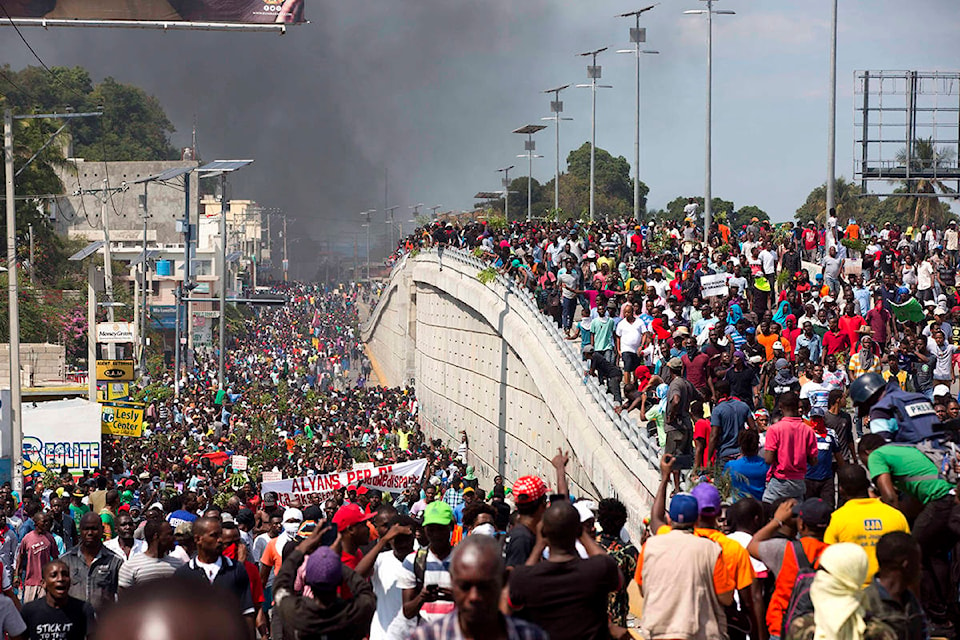History is such an interesting field of study. There are so many places and time frames to learn about. I can guarantee that even those who hated history in school could find a time period, event, or fact that makes them want to learn more.
Being a history minor, I will often be prompted by current events to look back and fill in some gaps in my knowledge. In doing so, I am almost always surprised by the depth and intrigue history has to offer.
One such moment happened last week, after the reprehensible assassination of Jovenel Moïse, Haitian president.
During my studies, I was mostly focused on recent history. But Haiti’s history was barely covered.
I am familiar with the country’s recent struggles, especially after the 2010 earthquake that killed over 200,000 according to government figures. I knew that Haiti is traditionally high on Canada’s list of countries receiving foreign aid and that there is a sizeable Haitian community in Canada. Michaëlle Jean, Canada’s governor general from 2005 to 2010, is a Haitian Canadian.
But I realized that I knew basically nothing about the history of the most populous country in the Caribbean so I decided to do a deep dive.
What I found was a unique and troubled national history — incredibly interesting in an academic sense. Since Columbus first landed on its shores, Haiti’s colonial history has played out far differently than Canada’s.
Below is a heavily truncated description of what I learned:
The island which Haiti now shares with the Dominican Republic was dubbed ‘Hispaniola’ by Christopher Columbus when he claimed it for Spain in 1492.
According to Steeve Coupeau’s 2008 book titled “The History of Haiti,” there were around 1 million Indigenous people on the island when Columbus made contact, a figure that was reduced to around 60,000 in 15 years.
“The native peoples were tragically decimated by Spanish colonization (through coerced labor, persecution, and various illnesses). Christopher Columbus was particularly brutal in the subjugation of the island,” Coupeau writes.
The Spanish brought slaves from Africa to replace the population and generate wealth on plantations and mines.
French buccaneers started settling on the island, and the French officially took control of the western part of the island in the late 1600’s, splitting Hispaniola into two colonies — modern day Haiti to to the west (French) and the Dominican Republic to the east (Spanish).
Per the University of Kansas’ Haitian Studies department, the colony became the richest in France’s possession and was known as ‘the pearl of the Antilles,’ on the backs of large scale slave labour.
That is until a revolution took place between 1791 and 1804. To make a very long and complicated story short, French, British, Spanish, American, separatist groups and slaves were involved in fighting over that time, which included atrocious acts of brutality by Napoleonic forces that were matched by rebels.
Haitian slaves, assisted by Polish forces that defected from Napoleon’s army, eventually won independence from France in what was the most successful slave rebellion in history. But to but to gain recognition, the new country was forced to shell out millions of francs in high interest indemnity payments to France.
Still, the country was not internationally recognized and the United States (wary of legitimizing a slave revolt) worked to isolate Haiti.
According to a Jacobin article titled “The Case for Haitian Reparations,” by the late 1800’s, 80 per cent of the country’s wealth was being used to service foreign debts.
The early state was marred by debt and struggled to remain unified. Assassinations, coups, divisions between Black Haitians and those with mixed European decent, plus wars with the Dominican Republic all took a toll.
American financial interests in Haiti started to escalate. Worried about the influence and financial control of Germans in Haiti, political instability and complaints from U.S. banks culminated in a U.S. invasion of the country in 1915 and a nearly 20 year military occupation.
Since then, Haiti has seen almost too many leaders to count, endured oppressive dictatorships or military rule, an HIV/AIDS outbreak, United Nations Stabilisation Mission, rampant gang violence and the aforementioned horrific 2010 earthquake.
While I feel history is interesting to learn about, it is equally important to learn from. Haiti’s story could be seen as unlucky, but that isn’t really true.
According to the Central Intelligence Agency’s World Factbook, Haiti is the poorest country in the Western Hemisphere. Forty per cent of people do not hold formal jobs and 60 per cent live under the national poverty line. That sort of situation doesn’t just happen, it takes factors like colonialism, slavery, and mistreatment from other nations.
Now after Jovenel Moïse’s killing, history has repeated itself yet again.
